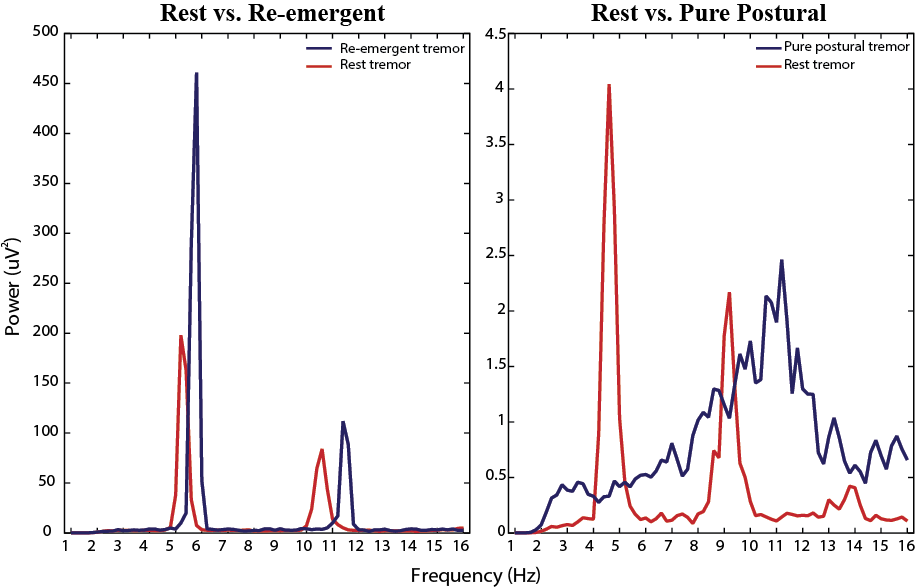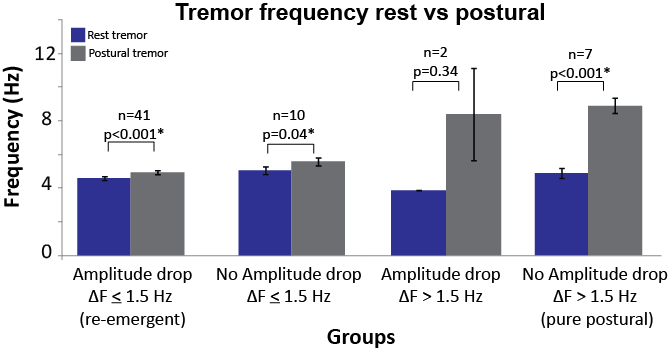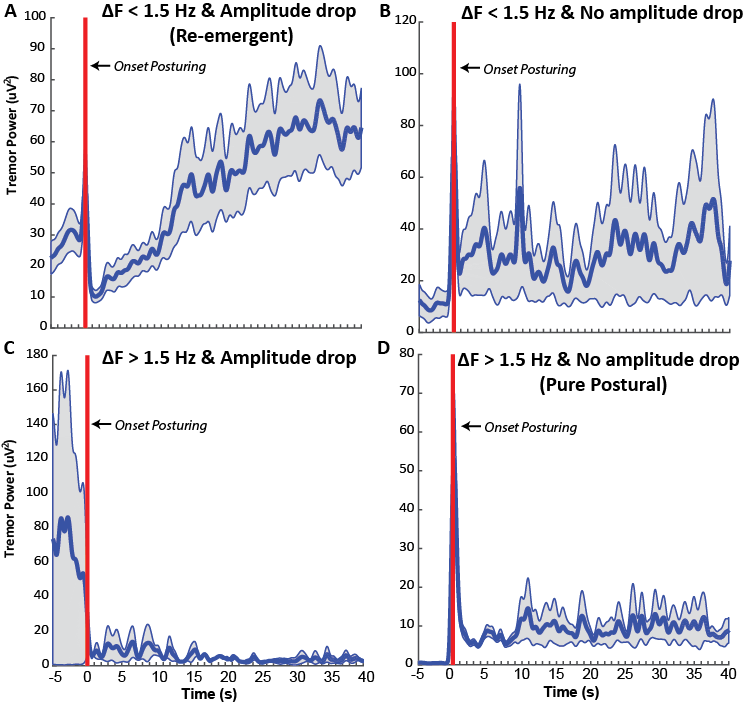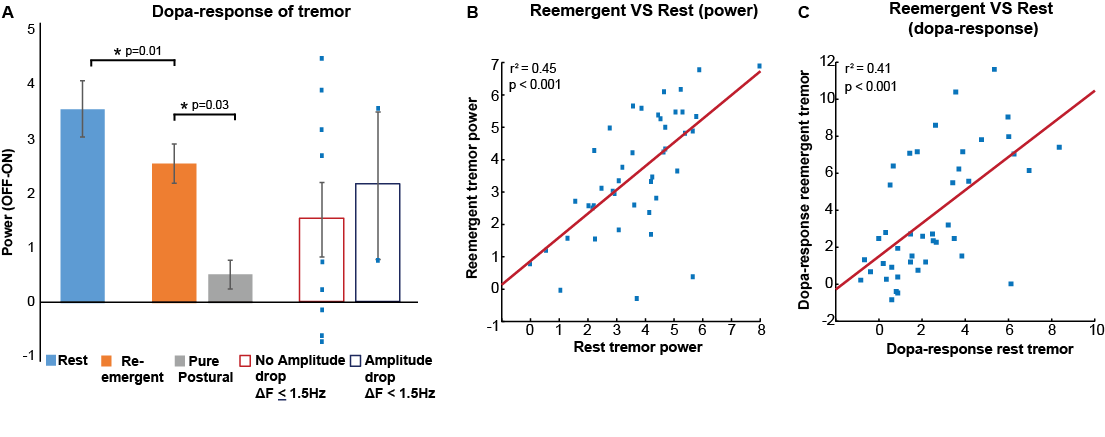Session Information
Date: Tuesday, June 6, 2017
Session Title: Parkinson's Disease: Pathophysiology
Session Time: 1:45pm-3:15pm
Location: Exhibit Hall C
Objective: To identify dopaminergic mechanisms underlying postural tremor in Parkinson’s disease.
Background: Parkinson’s tremor classically occurs at rest, but many patients also have a postural tremor. The nature of postural tremor, which is clinically diverse, remains unclear: besides re-emergent tremor, postural tremor may reflect co-occurring essential tremor, enhanced physiological tremor, or dystonic tremor.
Methods: We used electrophysiology and clinical assessments in 74 tremor-dominant Parkinson patients, both OFF-medication and after levodopa-benserazide 200/50 mg. First, we divided patients into four groups based on two orthogonal criteria: (1) presence/absence of a 1.5 Hz frequency difference with rest tremor; (2) presence/absence of tremor suppression upon posturing (Figure 1 & 2). Second, across groups we tested for levodopa-induced tremor reduction and for an association with clinical features.
Results: Of 60/74 (81%) patients with postural tremor, 68% had re-emergent tremor (amplitude suppression, frequency difference <1.5 Hz) and 12% had pure postural tremor (no amplitude suppression, frequency difference >1.5 Hz); 20% had “in-between” tremor (Figure 2 & 3). Levodopa reduced re-emergent tremor, but not pure postural tremor (Figure 4A). The dopamine response of the in-between groups was binomially distributed, indicating two underlying phenotypes. The power and dopamine response of re-emergent and resting tremor were highly correlated (Figure 4B & C). Pure postural tremor was not associated with signs of essential tremor or dystonia, and was not influenced by weighing.
Conclusions: Postural tremor in Parkinson’s disease can be divided into two phenotypes. Re-emergent tremor is continued resting tremor during stable posturing (“tremor of stability”) and has a dopaminergic basis. Pure postural tremor has a central origin and is inherent to Parkinson’s disease, but has a non-dopaminergic basis.
To cite this abstract in AMA style:
M. Dirkx, H. Zach, M. Hallet, R. Helmich. The nature of postural tremor in Parkinson’s disease [abstract]. Mov Disord. 2017; 32 (suppl 2). https://www.mdsabstracts.org/abstract/the-nature-of-postural-tremor-in-parkinsons-disease/. Accessed November 16, 2025.« Back to 2017 International Congress
MDS Abstracts - https://www.mdsabstracts.org/abstract/the-nature-of-postural-tremor-in-parkinsons-disease/




